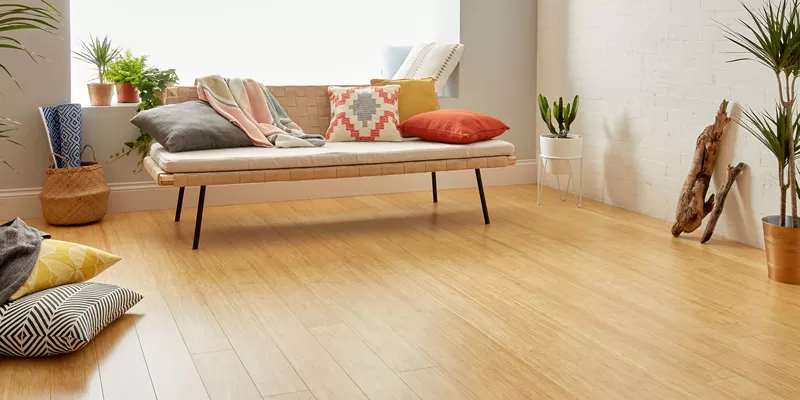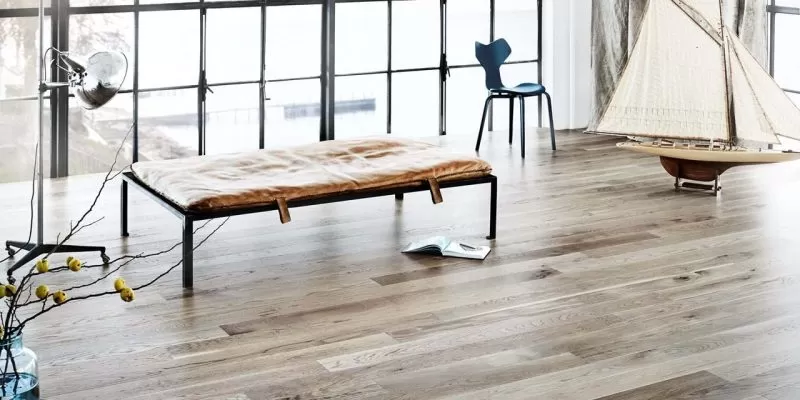Parquet and solid board are similar wood materials used for flooring, however, they have significant differences, advantages and disadvantages. Our experts — specialists in the field of construction and repair, have made a comparative analysis of the properties of these materials, which will help you make a choice when choosing one or another material.
We have highlighted the pros and cons of using both materials and summarized them in a table.
|
materials
|
Advantages
|
Flaws
|
|
|
+ resistant to changes in humidity and temperature due to the greater thickness compared to massive and the presence of a compensating layer;
+ has a lower cost compared to massive;
+ simpler installation, which can be done without the involvement of specialists, with your own hands due to easy connection using thorn-groove locks;
+ aesthetic appearance, as it is made of natural wood.
|
- a shorter service life than that of a massive one, since the working layer is no more than 4 mm, capable of withstanding no more than 3–4 scrapes;
- a complex composition, with the inclusion of glue, so we can not talk about complete environmental cleanliness.
|
|
|
+ we can talk about complete environmental cleanliness, since apart from wood, nothing else is included in its composition;
+ service life with proper care can be 70 years or more;
+ high maintainability, since the working layer to the tongue is 7–8 mm, the coating from the board can be sanded many times;
+ Coating retains heat very well;
+ attractive appearance, as the front surface of the product retains the structure of natural wood with the original pattern.
|
- higher price of the material than similar natural wood materials, such as parquet or parquet board, due to the fact that the most valuable part of the tree trunk is used for its manufacture;
- higher cost and labor intensity of laying works in comparison with parquet, as more operations have to be performed;
- sensitive to fluctuations in temperature and humidity, so it is necessary to monitor compliance with the microclimate in the premises.
|
parquet board

Parquet board is a type of flooring that combines the properties of natural parquet and solid wood. This flooring material is produced using the technology of manufacturing products from lamellas — small wooden planks, which makes it possible to obtain a material that is not inferior in aesthetic qualities to traditional parquet, but at a lower cost.
The parquet board consists of 3 layers:
-
the front or top layer is made of natural wood of valuable species. The top layer is varnished to protect the product from mechanical damage and abrasion;
-
the middle layer, more massive, made of less valuable conifers, plays the role of a base, tongues are cut into it to connect the boards when laying the floor;
-
the lower, lighter layer is designed to give greater rigidity to multilayer products.
Each subsequent layer is placed perpendicular to the previous one, which makes the material more durable, resilient and resistant to temperature and humidity changes.
It is divided into 4 types depending on the number of rows of planks in the top layer:
-
1‑row — looks like an ordinary solid wood product. Most suitable for flooring in rooms with a large area;
-
2‑row — can be used for the floor of medium-sized rooms, the interior of which is made in a classic style;
-
3‑row — the most popular, has a surface that imitates the structure of a block parquet of the “deck” type and can be used in rooms of any size;
-
4‑row — the least common, as it is not suitable for every interior.
Laying parquet board
Before laying the coating, carefully level the base. The easiest leveling method is a cement-sand mortar screed, which must be well dried to a moisture content not exceeding 5%. You can also prepare the base using self-leveling compounds.
The most popular type of coating laying is the so-called “floating” method. A waterproofing film is laid on a leveled and dried base, then a corrugated cardboard substrate. A parquet board is laid on the substrate, connecting the edges with tongue-and-groove locks. The laying of each next row is carried out in a run-up, shifting by about 300–400 mm in relation to the previous one. For laying this type of flooring does not require high qualifications.
massive board

Solid boards are made from different types of wood, including valuable ones such as oak, walnut, mahogany, beech, etc. Products are produced by manufacturers with various types of finishes — varnishing, toning, painting and tongue-and-groove on the side surfaces, that is, completely ready for laying. Differs in durability and the fine appearance allowing to decorate rich interiors.
It is divided into 4 main types, depending on the quality of wood, the method of sawing and processing it:
-
select type. It is made by tangential sawing from selected wood material of predominantly light colors, which has a uniform texture with a minimum number of defects;
-
radial type. The sawing of products is carried out in a radial way, as a result, the material acquires a textured monochromatic pattern. For this type, an array of high-quality light-colored wood is used with a minimum number of knots and fiber bends, which does not have chips, cracks and other damage;
-
nature type. It can be made by semi-radial, radial or tangential sawing. Changes in the tone of the wood, knots and small cracks are allowed, with the exception of rough damage and cracks;
-
rustic type. This view can also be made using any of the three sawing methods. Minor flaws are allowed in the material, which must be filled with putty and sanded.
Products from the manufacturer are supplied finished and ready to use, but can also be supplied unfinished, in their natural state. After laying, the coating can be processed, repaired and restored many times, as this material is very durable.
Solid board laying
Solid wood flooring is laid on a leveled and prepared subfloor with a moisture-resistant plywood underlay. Plywood is laid on glue for laying parquet and additionally fixed with self-tapping screws. Products are connected by means of thorn-groove locks; for this, the edges and ends are processed by the manufacturer in an appropriate way. In addition, products can have chamfers on four sides in order to visually indicate the boundary between the individual elements of the floor covering, as well as to compensate for fluctuations in temperature or humidity in the room.
Conclusions: A massive board is a more reliable, durable and high-quality material compared to a parquet board, but it is one of the most expensive floor materials, so it can be used with appropriate financial capabilities. However, the parquet board, although a “budget” option, also has certain advantages that may well suit the customer.

Добавить комментарий
Для отправки комментария вам необходимо авторизоваться.